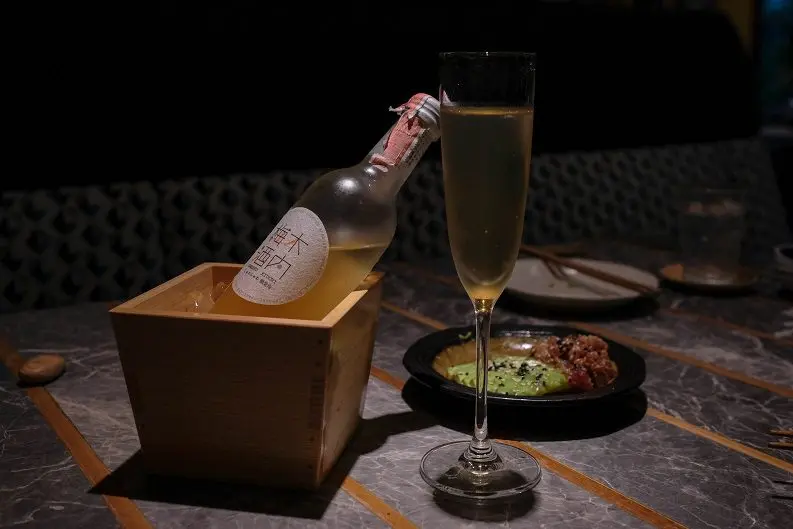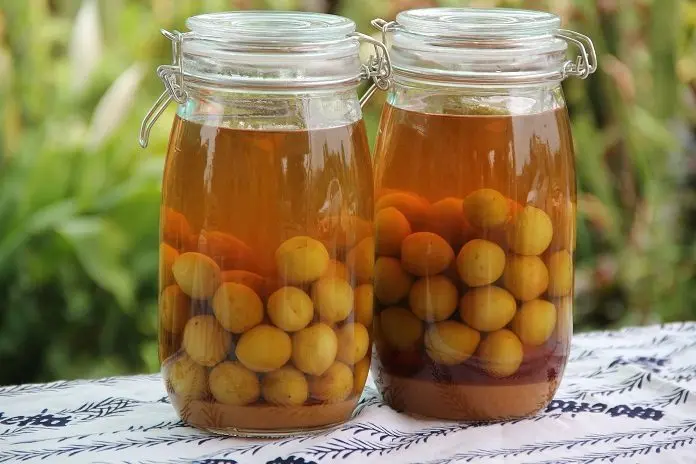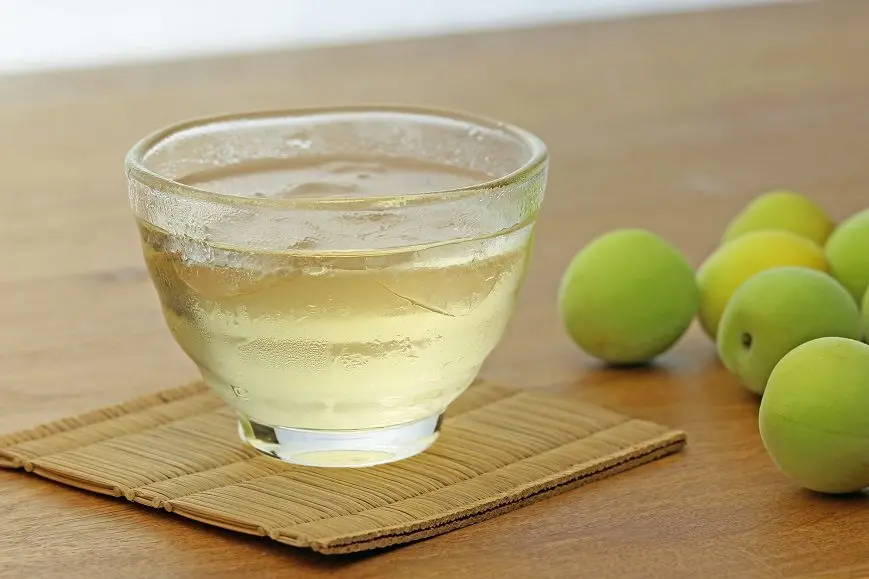Japanese umeshu liquor (umeshu) is made by maceration from ripe or green Japanese apricots (another name is “mume” or “ume”). The fruits are peeled, cut, covered with sugar and poured with shochu rice distillate (40-45%). The finished liquor is light yellow or green in color, has a sweet and sour taste and a strength of 10-15% vol. The most famous umeshu brands are Choya and Takara Shuzo, but umeshu is not a brand or name protected by origin, the liquor can be prepared even at home.
About fruits
In Russian-language sources, mume is often mistakenly called a plum, but this is a completely different fruit. Japanese apricot contains much more acids, antioxidants and amino acids. In Japan and China, mume has been used in medicine since ancient times. There is even a proverb in the East that states that the Japanese apricot can cope with three types of poisoning: in food, water and blood.

History
The first mention of the Ume plant is found in a Japanese poetry collection from 750 AD. For comparison, there are 118 poems devoted to the Japanese apricot, while only 42 poems are devoted to sakura. In the medical reference book, this fruit is listed in 918, and in 960, Emperor Murakami was cured of an illness with a drink that, according to the description, is very similar to umeshu (dried fruit). Japanese apricot and green tea). In the 1550s, during the era of civil wars, the ruler Kuroda Josui ordered each of his vassals to plant three mume trees in order to make medicinal essences from their fruits.
In 1697, the actual name of the drink “umeshu” was found in the recipe book for the first time, but only in a medical context – this remedy alleviated lung diseases, served as an antidote, helped against inflammation and improved appetite.
In 1914, CHOYA UMESHU CO., LTD was founded, the main manufacturer of umeshu today. In the 1950s, research began on the Japanese apricot to find the most suitable variety. In 1962, Japan passed a law allowing home production of alcohol for non-commercial purposes, and since 2005 a real umeshu boom has begun – now this liquor is drunk not only in the Land of the Rising Sun, but also far beyond its borders.

Technology of preparation
There is no strict recipe, but the classic umeshu is prepared as follows: for 1 kg of fruit, they take the same amount of sugar (or less, to taste) and 1.8 liters of shochu. Fruits filled with alcohol are left to infuse in a dark and cool place. After three months, the drink is ready to drink, but it is advisable to keep it for at least six months, and better – 9 months or even a year.

There are several hundred types of mume fruit in Japan, but only a few of them are suitable for umeshu, and the Japanese Nanko-ume apricot is considered the best.
Types of umeshu
Types of umeshu differ in alcohol base (alcohol base). Mume fruits can be poured:
- саке (на пример, Aragoshi Umeshu от Ume no Yado Brewery);
- сётю (Hannari Kyō Umeshu от Kitakawa Honke Brewery);
- бренди (Baikō Hyakunen Umeshu от Meiri Shurui Brewery);
- neutral alcohol (Kokutō Umeshu from Honbō Brewery).
These are only the most popular options, there is also grappa liquor, red wine and almost any other alcohol.

In Japan, there are hundreds of types of umeshu: classic, with honey and fruit additives, aged for five years, with whole fruits or infused with mume pulp, etc.
How to drink umeshu
Umeshu is drunk in its pure form – chilled, with ice, at room temperature or even warmed up. It is also diluted with water, green tea, tonic and soda. Japanese apricot liqueur belongs to low-alcohol drinks, it is popular among women and those who rarely drink alcohol.
Umeshu has a tart taste with notes of almonds and marzipan, refreshing in hot weather and warming in cold weather. Interestingly, the liqueur stimulates the appetite, so it is often served as an aperitif.

The “Umeshu plum wine” found on the market has nothing to do with the original Japanese product – it is a Chinese or German alcoholic drink containing only mume fruit flavors.









